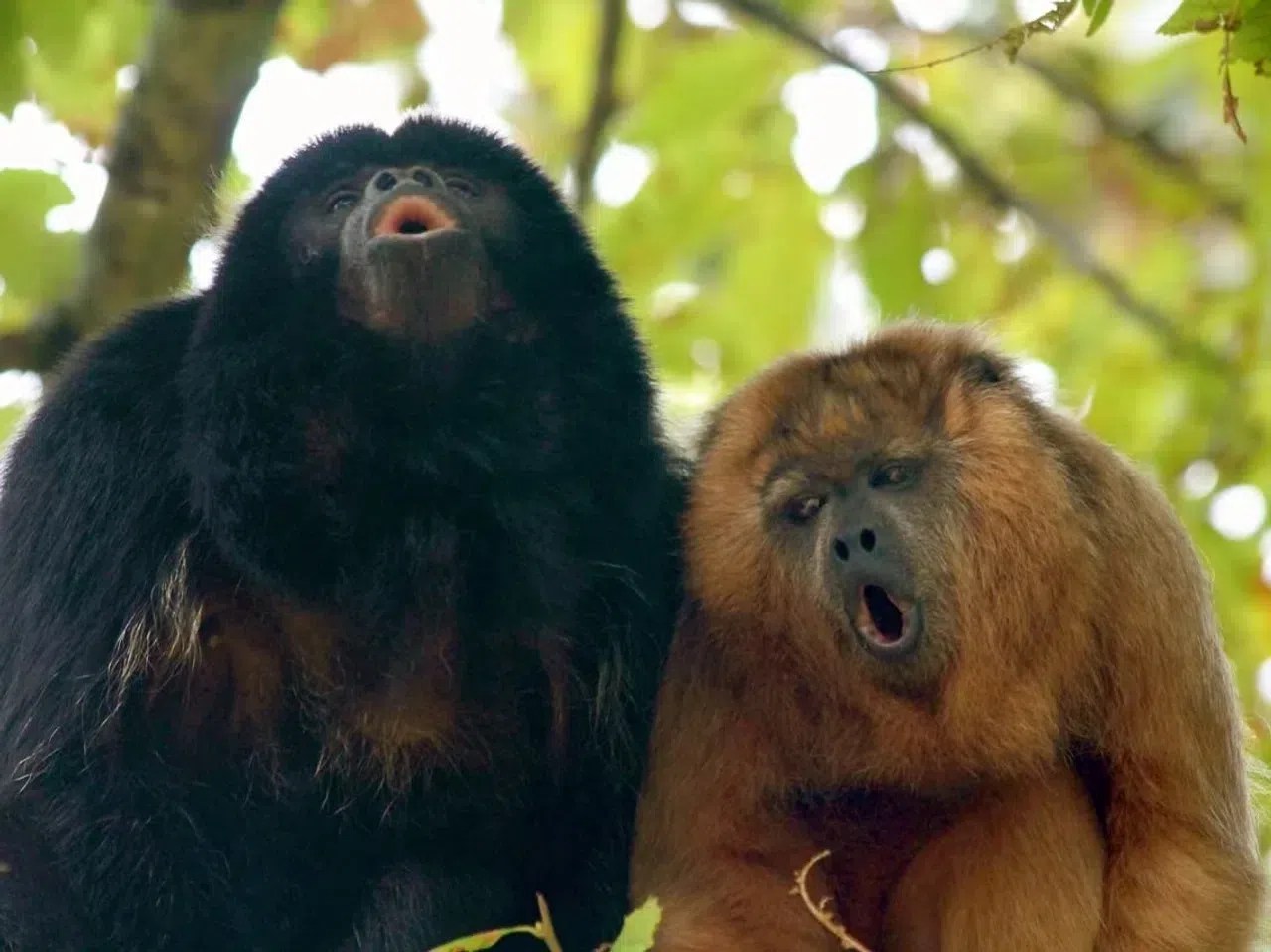Monkeys yodel better than humans

Several species of South American monkeys are capable of yodelling – and they do it far better than humans. This remarkable vocal ability is thanks to thin vocal cord membranes located above the vocal folds in the larynx, a feature found in many non-human primates.
These membranes allow the monkeys to switch rapidly between very high and very low tones, giving them an impressive vocal range. While humans can typically yodel within a range of about one octave, the New World monkeys studied can span up to three and a half octaves.
This is how a crested capuchin monkey yodels – FromWissen allgemein from 03.04.2025: Recording of a crested capuchin monkeyExternal link.
To the human ear, only a high pitch is recognisable. However, if the sounds are played back very slowly, the monkey’s call sounds like a Tarzan cry.
According to the study, this enhanced vocal flexibility is the result of their unique anatomy. The vocal cord membranes help produce a broader repertoire of sounds, which researchers believe may play a significant role in species with complex social behaviours. However, it remains unclear what exactly the monkeys are communicating through their yodelling.
Interestingly, while these membranes expand vocal possibilities, they also make the voice less stable. Researchers suggest this is likely why the membranes disappeared in the course of human evolution. As the ability to speak evolved, it required more consistent sound production – something the unstable membranes couldn’t provide.
Humans, it seems, sacrificed yodelling finesse for the sake of speech. We no longer have these vocal membranes – we yodel only with our larynx.
The study involved analysing CT scans, computer simulations and field work at La Senda Verde Wildlife Sanctuary in Bolivia. The researchers analysed the calls of various primate species, including the black and gold howler monkey (Alouatta caraya), the capuchin monkey (Sapajus apella), the black-capped squirrel monkey (Saimiri boliviensis) and the Peruvian spider monkey (Ateles chamek).
The New World monkeys, whose range extends from Mexico to Argentina, have been found to have the largest vocal cord membranes of all primates, suggesting that these thin bands of tissue play a particularly important role in vocal production and the repertoire of calls.
Translated from German using DeepL/amva

In compliance with the JTI standards
More: SWI swissinfo.ch certified by the Journalism Trust Initiative







You can find an overview of ongoing debates with our journalists here . Please join us!
If you want to start a conversation about a topic raised in this article or want to report factual errors, email us at english@swissinfo.ch.